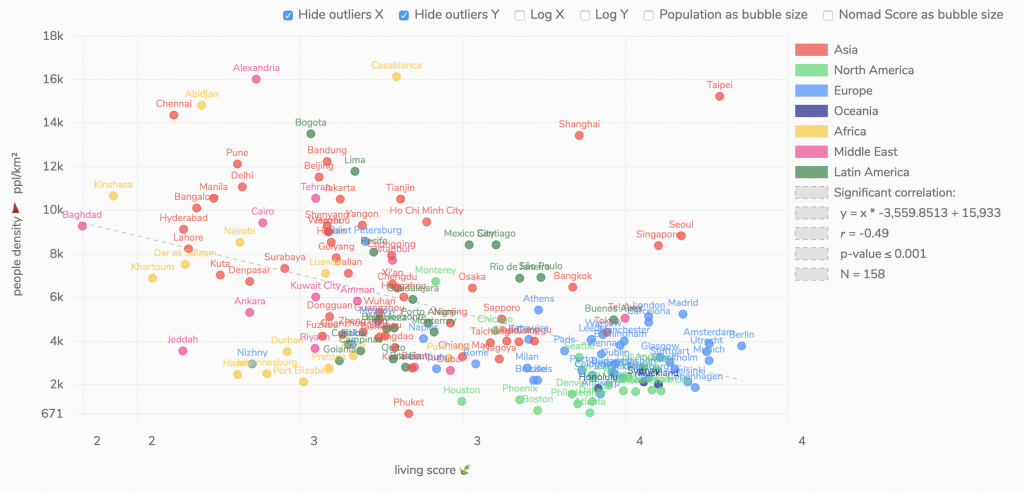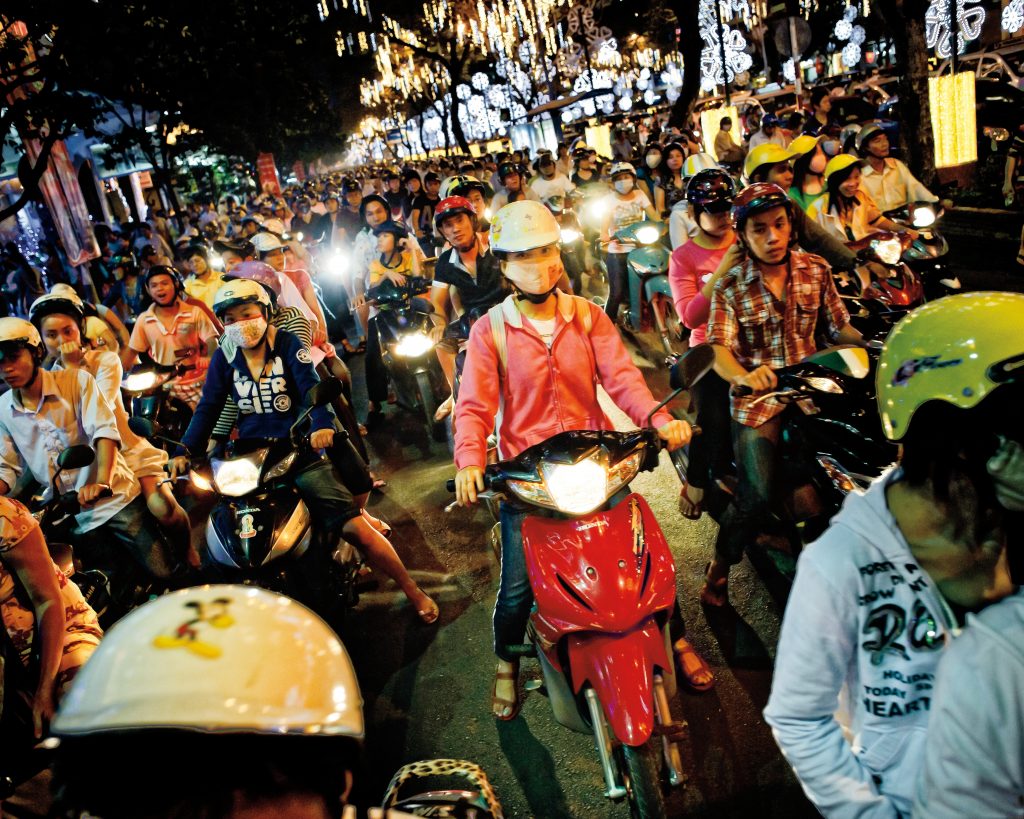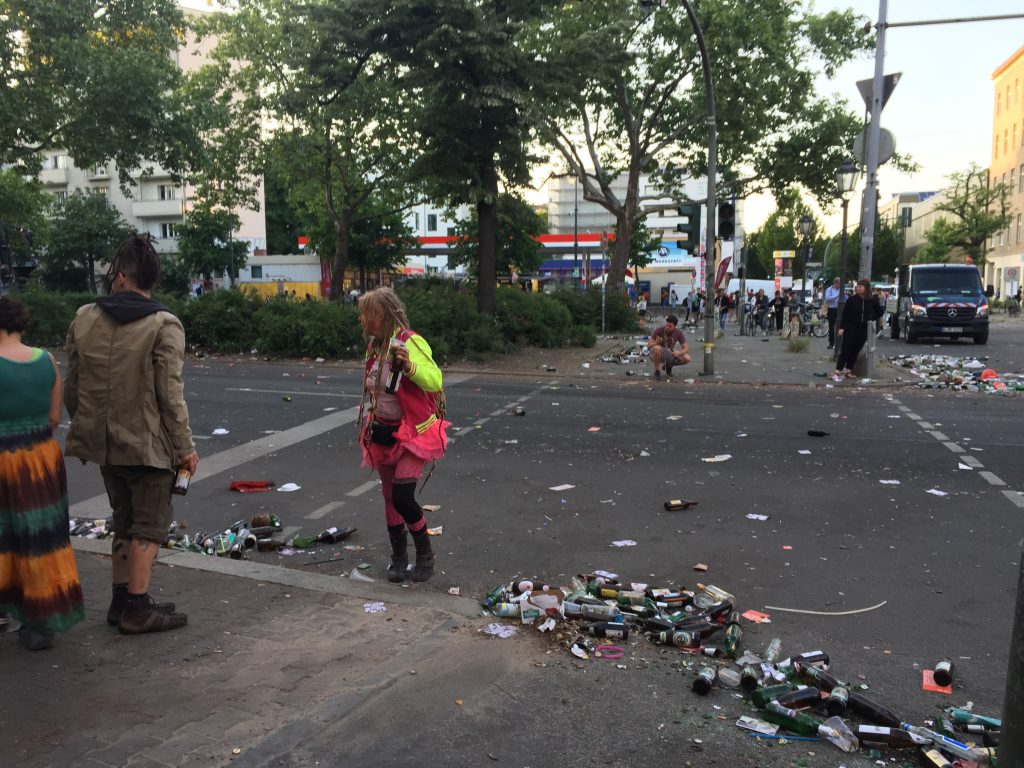
Big city paradise – problems and potential
Previously, I’ve been starting with independence. At the time of writing, I’m building gliderbase.com.
Since I’m easily fascinated, there are plenty of areas I can imagine to contribute something to, in the near future. One of these is better living in big cities. So first things first. Let me think out loud to you: what’s wrong with a concrete jungle? What constitutes paradise? But let me start with a short intro.
Big city life
Living in a big city can be the best experience. For some people, a big city provides all the energy, balance, and refreshment they need to be happy. For me, that’s the case 50% of the time. The other 50%, I’m struggling with big city life. But hey, what do I know, I have only actually lived in two big cities for a longer time: Berlin and Tokyo. They’re also highly developed cities. So my perspective is limited. Take this text with a grain of salt.
In Berlin, I’m observing people struggling in their daily big city life. What’s fascinating about those struggles is that there’s no easy, quick, or cheap solution to any of the problems. That makes for a great innovation potential.
Mattafix roughly summed up the struggle like this
I find myself in a Big City prison, arisen from the vision of mankind,
Designed, to keep me discreetly, neatly in the corner.
You’ll find me with the flora and the fauna and the hardship.
Back a yard is where my heart is,
Still I find it hard to depart this Big City Life.
Lots of people
In larger cities a lot of people tend to live in small areas. This density seems to be at the heart of the struggle. People generally need each other. They like to live together. But they don’t enjoy being surrounded by a lot of people they don’t know or don’t like. The following image plots density and living score (based on data by Nomad List). There’s not a very strong correlation, but at least less dense cities slightly tend to be more livable.

In some places, people have found incredible ways to deal with density. In case of Tokyo, that’s 1) using less individual space, 2) behaving more collaboratively and 3) building a fitting infrastructure that provides a lot of guidance for the masses.
Still, a couple of major problems exist. In my experience, density plays a large part in the problems I’m observing. So here we go.
Four problems and solution potential
Problem 1 – Transit

People want to get from A to B. Means of transportation provide a solution to the transportation problem, but often at the cost of the nerves of the transportee or other people around. Fear and stress are the consequences. Accidents happen, conflicts arise. Think about it. Every means of transportation is spiked with potential conflict. No matter whether you take the car, the bicycle, or public transport.
People’s current solution: trying to spend the least time possible in transit, trying to avoid situations of conflict.
Potential: Invent a completely risk-free means of transportation where someone travels from A to B, without causing fear or stress to either the transportee or to other people around.
Problem 2 – Invasion of the senses

People usually don’t like their senses to be controlled or invaded. Big cities constantly provide sounds (noise), smells (stinks), sights (disgusts / ugliness) and sometimes even tactiles that are all unpleasant and unwanted at that moment. The only sense, it seems, that a person is in direct control of, is taste.
People’s current solution: trying to keep control of their senses, trying to ignore the inconveniences, trying to develop a thicker skin.
Potential: Invent spaces within cities with stricter agreements on the number of people, the kinds of allowed behaviors, and the intensity of strain on the senses. Widen existing spaces like these.
Problem 3 – Unhealthy temptations

In big cities, I’d argue, people have easier access to potentially harmful consumption. There are more opportunities for entertainment, substance abuse and indulgence. So bad habits are the result of temptation and environmental exposure to those harmful opportunities. This especially affects people who don’t have enough willpower to resist or to regulate.
People’s current solution: trying to avoid temptations most of the time, trying to seek short-term cure or reconciliation.
Potential: Provide an easy way for people to restrict themselves. Provide guidance to healthier habits. Provide spaces within cities, without those temptations.
Problem 4 – Lack of care

Due to a mix of city size, density and culture, people often adopt a mindset of selfish demand. They expect the city, its services, its nature, its people, to provide for them. They tend to live off of the city instead of with it. In stark contrast to smaller towns, where people adopt a mindset of care, because they’re all living together, loving their land and helping their neighbors, big city inhabitants exercise their anonymity more, which leads to a dirtier, less cared-about, less-functioning city.
People’s current solution: sporadically countering the symptoms, i.e. cleaning, repairing, re-building.
Potential: Provide a way for people to identify with their local part of the city. Incentivize integration of people within their neighborhoods. Invent means to foster a mindset of care. Counter-act anonymity.
Now we could try to brainstorm to conceive solutions. But it’s way too early. My interaction professor used to emphasize:
Know your related work! Expose yourself to foreign influences!
So let’s go on an adventure. Let’s dream for a moment.
Lets look at paradise
Yes, there’s no such thing as paradise. But we can get inspired. We can look at the some utopias and extract the essence, discover core values, or at least become inspired.
Pursuit of happiness
In the book The Well-Tempered City, the author Jonathan F. P. Rose mentions Abu Nasr Muhammad al-Farabi, who was a philosopher in year 900 and wrote about cities.
According to al-Farabi (read here and there) there are different kinds of cities. First, his utopia:
- The virtuous city: people pursue knowledge, virtue and humility, which in the end gives them true happiness.
Then he describes the lesser cities:
- The ignorant city: people pursue happiness through full bodily health, wealth, honor, freedom, enjoyment of unrestricted pleasures, without realizing (ignoring) that their happiness is short-lived and not true.
- The wicked city: people have abandoned the pursuit of happiness for another (wicked) goal: power, pleasure or any other self-serving ideal.
I like the distinction. A virtuous city is surely what we can strive to build. These ideas even go beyond cities, you could say they’re society-scale. Still, you’ve got to start implementing these ideas somewhere. Creating a single city of virtuousness – love how that sounds – is already a difficult task.
But like all people, al-Farabi hadn’t figured it out. He emphasized that we would need to surrender all power to one ruler. That ruler would inspire happiness in the virtuous city by being the perfect, prophet-like, even god-like, impossible, human idol.
Well, probably not a great idea in today’s day and age.
Re-combination
So back in the Well-Tempered City, Jonathan Rose dreams of a possible combination of the best parts of every city. Quoting directly from the book:
Imagine a city with Singapore’s social housing, Finland’s public education, Austin’s smart grid, the biking culture of Copenhagen, the urban food production of Hanoi, Florence’s Tuscan regional food system, […], Paris’s bike sharing program, London’s congestion pricing, San Francisco’s recycling system, Philadelphia’s green storm-water program, […], Rotterdam’s approach to living with rising seas, Tokyo’s health outcomes, the happiness of Sydney, the equality of Stockholm, the peacefulness of Reykjavik, […], the Innovation of Medellín, the Universities of Cambridge, […]
He enumerates and goes on like this for half a page. Maybe, picking the best cherries from all around the world is not as impossible as it sounds. Maybe, to create a truely global, a truely virtuous city of the future, it is necessary to have this holistic point of view, to consider all the best parts and to integrate them all.
Use of materials
So much for the experienced thinkers. Well, what do young people imagine their paradise city to be like? I recently attended a workshop with 20 people in their 20’s. The workshop used a guided visualization exercise, asking us to close our eyes and to dream up a livable future city with as many details as possible. After that, we worked in three groups to bring our imaginations to a canvas. What surprised: everyone imagined their city to consist of a lot of natural materials like wood, plants, sand, water and stone. Materials like steel, glass or concrete were only used sporadically. Maybe something as simple as using more natural materials can foster some care.
Waking up from the dream.
Great, well I could go on researching paradise forever, but we’ll have to move forward here. Maybe there are existing solutions to the problems out there? Maybe they incorporate paradise?
To fix the four problems by building a new city and making the right choices from the start could be called a top-down approach.
The opposite would be tackling each problem in an existing city, by introducing gradual change. You could call that: bottom-up approach.
That leaves us with two research tasks:
- Top-down: look into city-scale building projects and their approaches to solve the four problems.
- Bottom-up: look into existing cities and existing approaches to solve the four problems.
You have to start somewhere. Let me start with 1.
How are city-scale builders incorporating paradise?
Let’s look at what is out there. How are the current big-city builders solving the four problems? Are they incorporating utopian values? Here’s a brief summary of 5 of the projects I found. From tiny to large, or rather: grande to venti. Bear with me for this flood of information, you’ll be rewarded with a synthesis.
1) Europacity (~1 km2), started 2013, close to Paris is designed by BIG, the architecture company around the danish architect Bjarke Ingels. After reading an interview for Volume Magazine, I’m convinced that Bjarke Ingels has a very modern and fitting approach to creating architecture in cities. Building with the philosophy „yes is more“, he tries to „say yes“ to all concerns. The final architectural result, he says, shouldn’t just be an incorporation of the concerns, but an almost logical consequence of those. Europacity promises to be „entirely pedestrian“ and to use „new modes of transportation“. After all, I couldn’t figure out whether it’s designed only as a place to visit, or as place to live as well. Yet it’s certainly a project to keep an eye on.
2) Masdar City (6 km2), started 2006 in Abu Dhabi, United Arab Emirates, is a city for 50000 people that recycles all its waste, runs on renewable energy and is built in the middle of a desert. Cars are not allowed inside the city. Instead, there’s a Personal Rapid Transit (PRT) system, a fleet of driverless, autonomous electric vehicles. They might be a first step towards stress-free transit. The disadvantage is the low capacity, which make PRT unsuitable for high-density cities. Researching a little more though, it seems like Masdar has stopped their plans to extend the system due to cost. They’re switching to electric cars and buses.
3) Centenary City (12 km²) started 2014, in Nigeria, is a city initiated by the Nigerian state. It’s designed to be a tax-independent, modern part of the capital, Abuja. Somehow, Centenary City seems to be designed for the rich – „Golf course, five star hotels“. I tried, but really couldn’t find any way they would specifically tackle any of the problems.
4) King Abdullah Economic City (173 km²), started 2005 in Saudi Arabia, is a city initiated by Saudi Arabia’s previous king. There’s some tradition to name things after yourself if you’re a Saudi King. The city, short: KAEC, is „designed to provide its residents with a daily experience with nature“. At a closer look, again, this city seems to be designed for a small elite: gated communities, golf courses, a lot of coastline apartments. They’re not directly addressing any of the four problems in their design brochure.
5) Neom (25,000 km²), started 2017, in the north-western corner of Saudi Arabia is the largest and most ambitious city-scale project I could find. In fact, the area is way bigger than just a city, almost the size of Belgium. As the project started just recently, it’s still in a visionary stage. They advertise a net-zero carbon footprint, 100% green transport and high walkability in local neighborhoods. Their fact sheet promises Digital Air to future inhabitants, as in: free wifi, and more interestingly, free online continuous education. It will be quite interesting to read their design details in the following years.
Synthesis
Now, let me pause for a moment. This is only a super tiny sample of current city-scale projects. I just discovered the list of megaprojects, which is super interesting to dive in further.
But one thing I already notice is that most of these city-scale projects try to innovate around transit. But the other problems I mentioned aren’t on the agenda (invasion of the senses, temptations, lack of care). Maybe that’s because the problems are too small, considering the resulting harm. Maybe they go too deep to be solved by-design, because they depend on culture. Maybe they’re too complex to solve because they require regulations and policy. I will have to look more into each one of them.
Another observation: none of the projects seem to start with utopian values or principles like those of the virtuous city. Material use is also not at the center of any plan I found. At best, a re-combination of best-practices from other cities can be read between the lines. Which leads me to conclude:
Even though the goal of city-scale projects is high livability, they don’t seem to be designed from a problems-first perspective.
That’s at least a minor insight.
So much for researching existing, top-down solutions. I guess it would be more valuable to look into specific solutions to the individual problems, i.e. bottom-up again. That’s part of a future blog post.
But you know what, maybe the question isn’t just how to solve those problems. Maybe we can reframe the solution space and ask some other questions:
How might we help big-city builders
- to become aware of typical big-city problems?
- to adapt their plans to tackle deeper big-city struggles?
- to incorporate paradise into their design?
Brainstorming and Prototyping
Now the next step would be to pick one of those how-might-we questions, to start brainstorming ideas and to prototype one of them. Right now, I don’t know how to help directly, doing what I usually do: building web applications.
To go completely philosophical: I’ll consider that my personal fallacy. I studied software engineering, the skills to create digital solutions to anything. So I have a fancy hammer to seemingly nail anything. But I also studied design thinking, so I usually find that solutions to the big-picture problems are rarely digital. Or that digital might only be a tiny part of a solution.
I’m convinced though, that opening up to big city problems is a necessary first step. Educating oneself is usually a good idea. And I’m only scratching the surface.
So if you know more about cities, problems, solutions, or if you have an idea where web applications can help, please go point me into the right direction!
My interaction professor used to define.
Luck: when preparedness meets opportunity
You might be interested in my projects or other articles. Also, feel free to follow me on Twitter.
All rights reserved.

